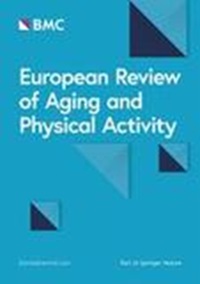Comparing the effects of aquatic-based exercise and land-based exercise on balance in older adults: a systematic review and meta-analysis
IF 3.5
1区 医学
Q2 GERIATRICS & GERONTOLOGY
引用次数: 0
Abstract
Balance plays a crucial role in the daily activities of older adults. Aquatic-based exercises (AE) are widely conducted as an alternative to land-based exercises (LE). Previous studies have compared AE and LE as effective ways to improve balance and have yielded inconsistent results. Therefore, this review aimed to compare the effects of AE and LE on balance function in older adults. Electronic databases, including PubMed, Web of Science, Scopus, and Embase, were searched. Randomized controlled trials published from January 2003 to June 2023 were included following predetermined criteria. Data extraction was carried out by two independent reviewers. Data synthesis was conducted using RevMan 5.3 software. The fixed-effect model or random-effect model was chosen based on the results of the heterogeneity test. Meta-analysis for the effect sizes of balance outcomes was calculated as standardized mean difference (SMD) with 95% confidence intervals (CI). The quality of the included studies was evaluated using the Physiotherapy Evidence Database (PEDro) scale. This review was registered at PROSPERO CRD42023429557. A total of 29 studies involving 1486 older adults (with an average age of 66.2 years) were included. Meta-analysis results indicated that AE could improve balance ability based on two tests: the Berg balance scale (BBS: SMD = 1.13, 95% CI 0.25 to 2.00, p = 0.01, I2 = 94%) and the 30-s chair stand test (30 CST: SMD = 2.02, 95% CI 0.50 to 3.54, p = 0.009, I2 = 96%). However, there were no significant differences between the AE group and the LE group in terms of the 6-min walking test (6 MWT: SMD = 0.13, 95% CI -0.16 to 0.43, p = 0.38, I2 = 62%) and time up to go test (TUGT: SMD = 0.44, 95% CI -0.44 to 0.91, p = 0.07, I2 = 85%). Older adults with different health conditions have different gains in different balance measurements after AE intervention and LE intervention. Although this was influenced by participant health status, transfer effects, sample size, and other factors, AE offers better benefits than LE for improving balance function in older adults.比较水上运动和陆上运动对老年人平衡能力的影响:系统回顾和荟萃分析
平衡在老年人的日常活动中起着至关重要的作用。水上运动(AE)作为陆上运动(LE)的替代方法被广泛采用。以往的研究将水上运动和陆上运动作为提高平衡能力的有效方法进行了比较,但结果并不一致。因此,本综述旨在比较水中运动和陆上运动对老年人平衡功能的影响。本文检索了电子数据库,包括 PubMed、Web of Science、Scopus 和 Embase。按照预先确定的标准,纳入了 2003 年 1 月至 2023 年 6 月期间发表的随机对照试验。数据提取由两名独立审稿人完成。数据综合使用 RevMan 5.3 软件进行。根据异质性检验结果选择固定效应模型或随机效应模型。平衡结果效应大小的 Meta 分析以标准化平均差(SMD)和 95% 置信区间(CI)计算。纳入研究的质量采用物理治疗证据数据库(PEDro)量表进行评估。本综述已在 PROSPERO CRD42023429557 上注册。共纳入 29 项研究,涉及 1486 名老年人(平均年龄 66.2 岁)。元分析结果表明,根据两项测试:伯格平衡量表(BBS:SMD = 1.13,95% CI 0.25 至 2.00,p = 0.01,I2 = 94%)和 30 秒椅子站立测试(30 CST:SMD = 2.02,95% CI 0.50 至 3.54,p = 0.009,I2 = 96%),AE 可提高平衡能力。然而,AE 组与 LE 组在 6 分钟步行测试(6 MWT:SMD = 0.13,95% CI -0.16-0.43,p = 0.38,I2 = 62%)和步行时间测试(TUGT:SMD = 0.44,95% CI -0.44-0.91,p = 0.07,I2 = 85%)方面没有明显差异。不同健康状况的老年人在接受 AE 干预和 LE 干预后,在不同的平衡测量中获得的收益不同。虽然这受到参与者健康状况、转移效应、样本大小和其他因素的影响,但在改善老年人平衡功能方面,AE 比 LE 更有益处。
本文章由计算机程序翻译,如有差异,请以英文原文为准。
求助全文
约1分钟内获得全文
求助全文
来源期刊
CiteScore
8.60
自引率
1.60%
发文量
29
审稿时长
>12 weeks
期刊介绍:
European Review of Aging and Physical Activity (EURAPA) disseminates research on the biomedical and behavioural aspects of physical activity and aging. The main issues addressed by EURAPA are the impact of physical activity or exercise on cognitive, physical, and psycho-social functioning of older people, physical activity patterns in advanced age, and the relationship between physical activity and health.

 求助内容:
求助内容: 应助结果提醒方式:
应助结果提醒方式:


